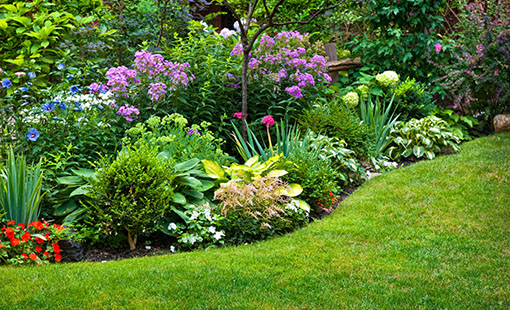
What’s a Perennial?
Even in their dormant phases, perennial plants can die back to the ground, but their root systems are very much alive and the plants will continue growing when conditions are right.
What Is a Perennial Plant?
Perennials are plants that are expected to live longer than two years. Unlike annual plants (zinnias, marigolds, radish) which complete their life cycle in one growing season and biennials (Sweet William, hollyhocks, onions) which need two growing seasons to mature and go to seed, perennials may go to seed every year. They’re able to live for so long because they can stay dormant for long periods of time before re-blooming. Basil, potatoes and strawberries are a few examples of perennial plants.
A few perennials are considered to be short-lived, lasting only two to three years. Rose campion is a short-lived perennial, but because it self-seeds so readily, it appears to live much longer. While other perennials, like peonies, have been known to last for more than 100 years, though it may take several seasons before they establish.
Fun Fact
This gardening saying describes the delayed gratification that can come with growing perennials: “The first year they sleep, the second year they creep, and the third year they leap.”
Hardiness Zones and Perennial Plants
Not all plants with the ability to be perennial are hardy in all areas. Some can be killed by freezing temperatures, excessively dry conditions or other growing conditions. This is why hardiness zones are so important. Knowing what zone you garden in will allow you to determine what plants will survive in your area.
Are there Different Types of Perennials?
The term perennial is most often used for plants with showy flowers, but plants such as ornamental grasses, tropicals such as canna and caladiums, vegetables such as rhubarb and artichokes and other plants that have their own categories may also be perennial.
The term herbaceous perennial further narrows the definition of perennials to plants with soft, green stems that die back to the ground in colder climates.
What About Trees and Shrubs?
Trees and shrubs are considered woody or non-herbaceous perennials. They may lose their leaves in winter but remain very much alive in their roots right up through their stems, branches, and buds. Perennial trees and shrubs would be considered woody.
Are Perennials Less Work than Annuals?
Perennials require different maintenance than annual plants, but they are not all carefree. Most require at least some pruning and feeding, to remain healthy enough to survive several years.
- Division: Although you don’t need to replant perennials every year, as you would with annuals, eventually they will need to be dug up and divided. Then the divisions will need to be replanted. Some plants need dividing every couple of years and some, like peonies, virtually never need division unless you want to make more plants.
- Pest Patrol: Monitoring for pests and diseases is still very important with perennials. It’s bad enough to lose an entire season of annuals to a disease, but to lose a bed of perennials you’ve had for a decade is heartbreaking. And since perennials are usually planted in large clusters, it is very easy for a disease or feeding insect to affect the whole clump in a short time. You really need to check on your perennial plants regularly throughout the growing season.
- Deadheading: Many perennials repeat bloom if you continually deadhead the spent blooms. This is a chore they share with some annuals. Even perennials that don’t repeat bloom, such as hosta and astilbe, benefit from deadheading their flower stems so that the energy of the plant can go back into the roots and leaves, rather than into setting seed. Of course, if you want the seed, you can certainly allow the seed pods to form.
- Seasonal Clean-up: Since herbaceous perennials die back to the ground each winter, you will need to prune and remove the old foliage, before the new growth begins. Some plants prefer to be cut back in the fall and a handful prefers to be pruned in the spring. Most are not terribly fussy about timing, so you can do it whenever you have the opportunity.
There are other maintenance jobs required by some perennial plants, but they really are not labor-intensive. Besides, these gardening chores are at the heart of what it means to garden. While perennials and annuals are not better or worse than one another, having some perennials in your garden is a lovely guarantee that you will have flowers each season, even if you have limited time to plant in the spring.
Information courtesy of TheSpruce.com

 Adams Fairacre Farms
Adams Fairacre Farms